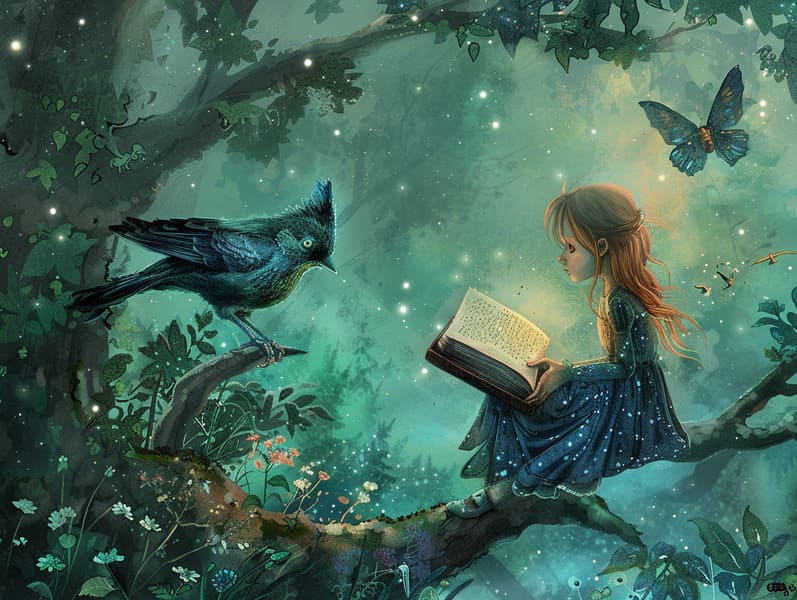The Birth of Bedtime Fairy Tales with Their Unfading Appeal.
The Birth of Bedtime Fairy Tales with Their Unfading Appeal.
Blog Article

Famous fairy tales have old origins. These narratives have been narrated from one generation to the next centuries before they were ever written down. They came from a variety of cultures, including Asian traditions. They were initially passed along among adults, often carrying themes and messages related to the societal norms and beliefs of the time.
The famous Grimm duo, Jacob and Wilhelm (the Grimm brothers), were among the first to gather many of these beloved narratives. Their compilation, "Grimm's Fairy Tales," included stories like "Cinderella," "The Bread Crumb Trail," and "Schneewittchen," which have since become mainstays in the world of timeless fairy tales. Similarly, H. C. Andersen's enchanting fairy tales, such as "The Story of the Little Mermaid," and "The Story of the Ugly Duckling," have floated into hearts worldwide, establishing their place in the pantheon of beloved fairy tales.
Though they are old, fairy tales remain as significant as ever, especially as nighttime stories for kids. These enchanting tales are now available in numerous formats, including richly illustrated books, magical animations, and digital storybooks.
Their persistent charm can be ascribed to several captivating elements:
Ethical Lessons: Classic fairy tales often present important moral lessons. Stories like "The Boy Who Cried Wolf" teach the merit of honesty, while "The Tortoise and the Hare" highlight the benefits of tenacity and humbleness. These tales offer young readers clear distinctions between correct and incorrect, guiding their moral compass in a subtle yet lasting way.
Empathy and Awareness: Timeless fairy tales frequently illustrate characters facing tests and troubles, encouraging readers to resonate with their struggles and applaud their triumphs. For instance, "Beauty and Her Beast" illustrates the necessity of seeing beyond the surface to realize the true being of a person, nurturing understanding and awareness.
Cultural Perception: Many ancient fairy tales are imbued with the cultural contexts from which they sprang. Delving into these stories can provide enlightening views into different societies, fostering a sense of global respect and comprehension.
Fantasy and Innovation: The fantasy-filled elements in timeless fairy tales—enchanted forests—trigger children’s dreaming abilities. These stories transport readers to mythical realms, activating imaginative thinking and a sense of mystery that lasts a lifetime.
Old fairy tales are not only charming but also pedagogical. They work as captivating tools in advancing various cognitive and emotional skills in kids. When classic fairy tales are spoken, they nurture language proficiency by teaching new words and elaborate sentence structures. This practice also strengthens listening skills and attention span, as children concentrate deeply, expectant to see what happens next.
Furthermore, conversing about the themes and characters of fairy tales can strengthen thought processes and thought processes. The young learn to discern patterns, forecast, and realize cause and effect. These contemplations also encourage young readers speak out their thoughts and feelings, contributing to their emotional intelligence.
In today’s electronic age, the abundance of web-based fairy tales has made these tales more attainable than ever. Web-based platforms and mobile apps offer comprehensive collections of famous fairy tales that can be seen or listened to anytime, anywhere. Fairy tales spoken are particularly prevalent, presenting an interactive way for young readers to engage with these fascinating tales. Audio stories and read-to-me videos transport characters and settings to life, often supported by charming soundtracks and tunes that heighten the narrative adventure.
The find it here lasting allure of old fairy tales lies in their ability to shift to current eras while sustaining their basic principles. Contemporary reimaginings of these stories often spotlight more different protagonists and modern settings, making them relatable to today’s audience. However, the main ideas of valor, charity, and lawfulness remain unchanged, continuing to impact children of all ages.
Traditional fairy tales also offer a sense of assurance and knownness. They bestow a ordered narrative with a apparent beginning, middle, and end, often concluding with the conclusion of conflicts and the triumph of good over evil. This dependability can be encouraging for kids, introducing a sense of solidity in an shifting world.
Traditional fairy tales continue to bewitch and inform new generations, maintaining their attraction and pertinence in modern society. As bedtime stories for kids, they make accessible a perfect blend of delight and instruction, enriching moral values, empathy, and creativity. The accessibility of digital fairy tales and the favor of fairy tales read out loud warrant that these classic narratives remain available to new generations.
By upholding and disseminating these tales, we continue to laud the rich tapestry of creativity and cultural heritage. Whether you are discovering a beautifully illustrated book, accessing a cyber collection, or listening to an voice book, the wonder of Grimm's fairy tales is always within reach. These fairy tales reveal of the perpetual impact of narratives and its ability to bring us together across epochs and places.
Be it you are browsing a gorgeously illustrated book, enjoying a web collection, or playing an voice book, the wonder of famous fairy tales is always within reach.
These narratives illustrate of the endless spell of narratives and its ability to unite us across generations and cultures, making a tie that fascinates and enlightens alike.